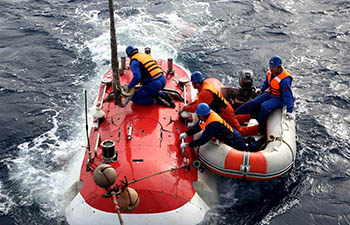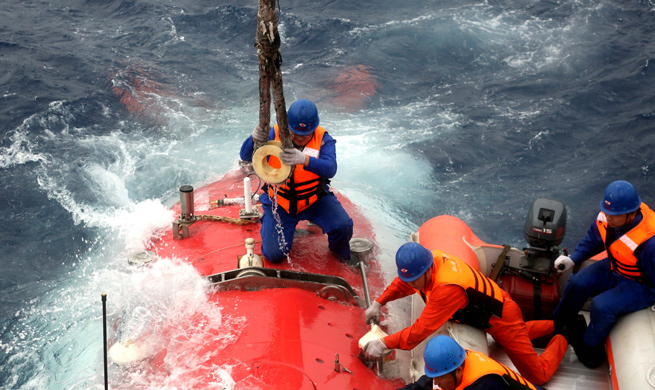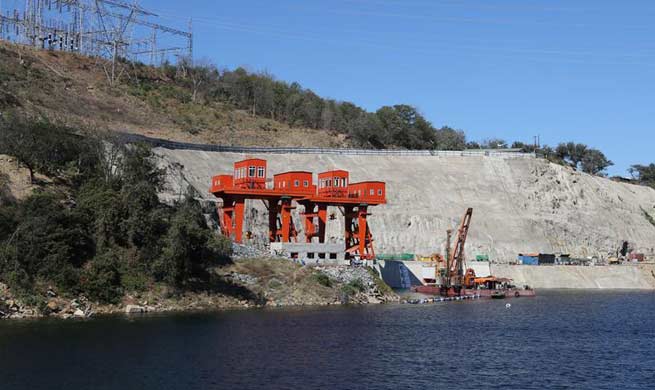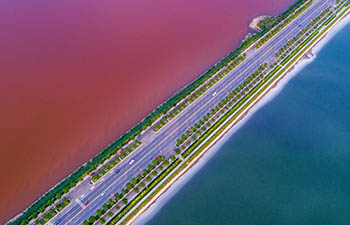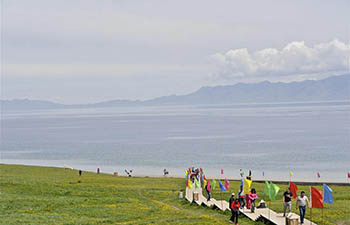SAN FRANCISCO, June 4 (Xinhua) -- A survey of the California Current System along the U.S. West Coast of the United States found persistent, highly acidified water throughout the ecologically critical nearshore habitat.
Led by Francis Chan, a marine ecologist at Oregon State University (OSU), researchers participating in the survey said conditions will continue to worsen because the atmospheric carbon dioxide primarily to blame for the increase in acidification has been rising substantially in recent years.
While findings of the study, which was published last week in Nature Scientific Reports, identified "hotspots" of pH, or potential of hydrogen, measurements as low as any oceanic surface waters in the world, there were "refuges" of more moderate pH environments that could become havens for some marine organisms to escape more highly acidified waters.
"The threat of ocean acidification is global and though it sometimes seems far away, it is happening here right now on the West Coast of the United States and those waters are already hitting our beaches," said Chan. "Ten years ago, we were focusing on the tropics with their coral reefs as the place most likely affected by ocean acidification. But the California Current System is getting hit with acidification earlier and more drastically than other locations around the world."
With a network of sensors to measure ocean acidification along more than 600 miles, or 965 kilometers, of the West Coast, the researchers observed near-shore pH levels that fell well below the global mean pH of 8.1 for the surface ocean over a three-year period, and reached as low as 7.4 at the most acidified sites, which is among the lowest recorded values ever observed in surface waters. pH is a numeric scale used to specify the acidity or basicity of an aqueous solution. The lower the pH level, the higher the acidity.
Previous studies have documented a global decrease of 0.11 pH units, equivalent to a drop of approximately 30 percent, in surface ocean waters since the beginning of the Industrial Revolution.
"The highly acidified water was remarkably persistent over the three years," Chan said. "Hotspots stayed as hotspots, and refuges stayed as refuges. This highly acidified water is not in the middle of the Pacific Ocean; it is right off our shore. Fortunately, there are swaths of water that are more moderate in acidity and those should be our focus for developing adaptation strategies."
Highly acidified ocean water is potentially dangerous because many organisms are very sensitive to changes in pH.
The researchers have noticed that negative impacts already are occurring in the California Current System, where planktonic pteropods, or small swimming snails, were documented with severe shell dissolution.
However, the moderately acidified refuge areas can be strategically used and managed, Chan said. "We probably have a hundred or more areas along the West Coast that are protected in one way or another, and we need to examine them more closely," he was quoted as saying in a news release from OSU. "If we know how many of them are in highly acidified areas and how many are in refuge sites, we can use that information to better manage the risks that ocean acidification poses."





